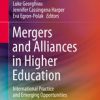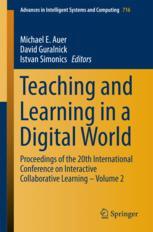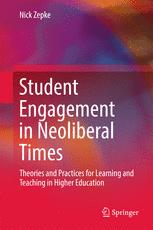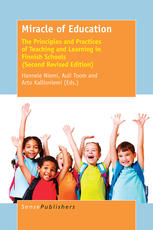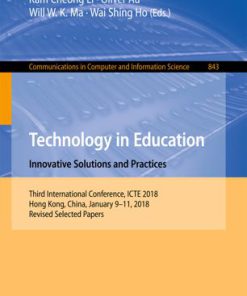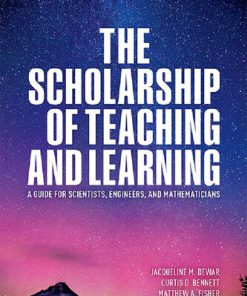Emerging Practices in Scholarship of Learning and Teaching in a Digital Era 1st Edition Siu Cheung Kong 9811033447 9789811033445
$50.00 Original price was: $50.00.$25.00Current price is: $25.00.
Emerging Practices in Scholarship of Learning and Teaching in a Digital Era 1st Edition Siu Cheung Kong – Ebook Instant Download/Delivery ISBN(s): 9811033447, 9789811033445
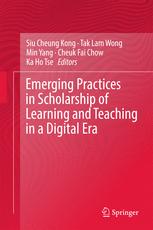
Product details:
- ISBN 10: 9811033447
- ISBN 13: 9789811033445
- Author: Siu
In this book, we put forward a holistic conceptual framework for implementing Scholarship of Learning and Teaching (SoLT) in higher education. Unlike previous SoLT studies, which usually focus on a specific aspect, here various aspects are integrated into a holistic framework. Further, it identifies three main stakeholders, namely, the higher education institution, teaching staff, and students. These stakeholders are in turn connected by four interlocking themes: staff professional development, enhancement of student learning experiences, assessment, and digital technologies. Presenting chapters that address these four themes, this book supports the advancement of SoLT in higher education in relation to existing theories and emerging practices. By helping academics and leaders in higher education to implement SoLT for the improvement of student learning and teaching practices, it also makes a valuable contribution to the field of teacher education.
Table of contents:
1 Toward a Framework of Studying Scholarship of Learning and Teaching in Higher Education in a Digit
Abstract
1.1 Introduction
1.2 Evolution of the Concept of the Scholarship of Teaching (and Learning)
1.3 Models of Scholarship of Teaching (and Learning)
1.4 From Scholarship of Teaching (and Learning) to Scholarship of Learning and Teaching
1.5 Framework of Scholarship of Learning and Teaching (SoLT) in Higher Education
1.5.1 Theme 1: Staff Professional Development
1.5.2 Theme 2: Enhancement of Student Learning Experience
1.5.3 Theme 3: Assessment
1.5.4 Theme 4: Digital Technology
1.6 Chapters in This Book
References
Staff Professional Development
2 Community of Practice: Building a Mobile Learning Community in a Higher Education Institution to P
Abstract
2.1 Introduction
2.2 Research Design
2.2.1 Phase I: Literature Review, Team Meetings, and Investigating Potential Members
2.2.2 Phase II: Building the MLC Platform and Promoting the MLC
2.2.3 Phase III: Evaluating the Effectiveness of the MLC
2.3 Findings and Discussion
2.3.1 Key Factors in Establishing a Successful Mobile Learning Community
2.3.1.1 Strategic Recruitment of Community Members
2.3.1.2 Creating a Rich Information Sharing Centre: Building a Mobile Learning Community Website
2.3.1.3 Organization of Diverse Sharing Sessions that Aim for Innovations
2.3.1.4 Making an Impact on Students’ Learning
2.3.1.5 Making an Impact on Staff Development
2.3.2 Evaluation of Effectiveness of the Mobile Learning Community
2.3.2.1 Statistics Recorded in the Built-in Tracking System
2.3.2.2 Evaluation of the MLC Website by Online Reviewers
2.3.3 Evaluation of MLC Activities
2.3.3.1 Evaluation of Member Achievement
2.3.3.2 Evaluation by Invited Mobile Learning Experts
2.4 Conclusion
Acknowledgements
Appendix 1: Online Form for Inviting Students to Conduct App Reviews
References
3 Learning to Engage the Digital Generation in Teacher Education
Abstract
3.1 Introduction
3.2 Case Description
3.3 Evaluation
3.3.1 Overall Feedback from Student Participants
3.3.2 Ideal Forms and Proper Use of Digital Lectures
3.3.3 Effects of DL in Various Chinese Language Education Contexts
3.3.4 Insights Gained in the Professional Development Process
3.3.4.1 Adhesive Power of a Learning Community
3.3.4.2 Importance of Maintaining Staff IT Proficiency and Administration Support
3.4 Concluding Thoughts
References
4 Technology Integration for Student-Centered Learning: A Model for Teacher Professional Development
Abstract
4.1 Introduction
4.2 Research Basis for A2I2 Model
4.2.1 Theoretical Underpinnings of the Model
4.2.2 Evolution of A2I2: Design-Based Implementation Research
4.3 A2I2: The Model
4.3.1 Using the A2I2 Model
4.4 Application of A2I2 Model: The ET4ET Program
4.4.1 Immersivity and Active Learning in ET4ET Program
4.5 Evaluation of ET4ET Program
4.5.1 Teachers’ Belief About Student-Centered Practices
4.5.2 Teachers’ Competence in Use of Technology
4.5.3 Teachers’ Reported Practice
4.6 Discussion and Conclusion
References
5 Development of an Effective Staff Professional Development for the Enhancement of Student Learning
Abstract
5.1 Introduction
5.1.1 Why Did Current Peer Support Provision Need to Change?
5.1.2 Why Is the Development of an Effective SPD Programme Needed?
5.2 Establishment of the Staff Professional Development Programme
5.2.1 Evaluation Mechanism of the Current SPD Programme
5.2.2 Analysis of the Evaluation of SPD Activities
5.2.3 Discussion of Evaluation Results
5.2.3.1 The Provision of SPD Programme was Appropriate
5.2.3.2 Feedback from Evaluation Served as Good Indicators for Future Improvement
5.3 Improvement of the Current SPD Programme
5.3.1 What Did the Current SPD Programme Miss?
5.4 Development of an Effective SPD Programme
5.4.1 Stage One—A Certificate Course
5.4.2 Stage Two—An Effective and Sustainable SPD Programme
5.4.3 Implementation Cycle of an Effective SPD Programme
5.5 Conclusion
References
6 Leveraging Knowledge Through Communities of Practice
Abstract
6.1 Introduction
6.2 Literature Review
6.2.1 A CoP in Higher Education Institutes (HEIs)
6.2.2 Cultivating CoPs
6.3 A CoP in Field Experience Supervision
6.3.1 How the CoP Was Nurtured?
6.3.2 How the CoP Was Evolved?
6.3.3 Rebalance Participation and Reification
6.3.4 Evaluation of the CoP
6.3.5 Learning from Cultivating the CoP
6.3.6 Self-sustaining Mechanism
6.4 Conclusion
References
7 Affordances and Constraints of BYOD (Bring Your Own Device) for Learning in Higher Education: Teac
Abstract
7.1 Introduction
7.2 Related Literature
7.2.1 BYOD in Higher Education
7.2.2 Affordances
7.2.3 Affordances of Mobile Technologies in Education
7.2.4 Constraints
7.2.5 Framework of Affordances and Constraints of BYOD in Higher Education
7.3 Research Methods
7.3.1 Participants
7.3.2 BYOD-Supported Learning Environments of the 17 Teachers
7.3.3 Data Collection
7.3.4 Data Analysis
7.4 Results
7.4.1 Affordances of BYOD for Learning and Teaching
7.4.2 Constraints of BYOD Encountered in Learning and Teaching
7.5 Discussions
7.6 Conclusion and Implications
Acknowledgements
References
Enhancement of Student Learning Experience
8 Plastic Waste Problem and Education for Plastic Waste Management
Abstract
8.1 Plastic Waste Problem
8.2 Education for Plastic Waste Management
8.2.1 Education for Plastic Waste Management in Japan, Taiwan, The UK, and Hong Kong
8.2.1.1 Japan
8.2.1.2 Taiwan
8.2.1.3 The UK
8.2.1.4 Hong Kong
8.2.2 Importance of Plastic Waste Education
8.2.2.1 Change in Knowledge
8.2.2.2 Change in Attitudes
8.2.2.3 Change in Behavior
8.2.2.4 Educational Strategies
8.3 The Centre for Education in Environmental Sustainability’s (CEES) Aim/Vision of Plastic Waste
8.4 Plastic Waste Education Adopted by CEES
8.4.1 Methodology
8.4.1.1 Direct Teaching Strategy
8.4.1.2 Hands-on Teaching Strategy
8.4.1.3 Simulation Game-Based Teaching Strategy
8.4.2 Results
8.4.2.1 Knowledge of the 3Rs and Plastic Waste Problems and Management
8.4.2.2 Ecological Worldview Attitude
8.4.2.3 Recycling Attitude
8.4.2.4 Intended Behavior of Plastic Waste Recycling
8.4.3 Discussion
8.5 Conclusion and Future Perspectives
References
9 An Interactive Conceptual Approach to Support the Teaching and Learning of Green Technology
Abstract
9.1 Introduction
9.2 Methodology
9.3 Results and Discussion
Acknowledgements
References
10 The Unconventional Learning Experience of Students—Becoming a Courier of Marine Stewardship
Abstract
10.1 Introduction
10.1.1 Marine Conservation, Protection and Environmental Sustainability
10.1.2 Environmental Education and Related Pedagogy
10.1.3 Scholarship of Learning and Teaching (SoLT) and the Education Programme “Courier MS EdU”
10.2 The Research Question and Methodology
10.2.1 Overview of “Courier MS EdU”
10.2.2 Research Instrument and Analysis
10.3 Results
10.3.1 Reasons for Joining the Programme and the Most Impactful Experience
10.3.2 Improvement on Knowledge, Attitude and Behaviour (KAB)
10.3.3 Visitor Codes and Action Competence
10.3.4 Effectiveness of Field-Based and Service-Based Learning
10.3.5 Difficulties Faced by the Team Members
10.4 Discussion
10.4.1 Action Competence of the Students
10.4.2 Scuba Diving as a Tool for Field-Based Learning
10.4.3 Scuba Diving for the Service Education
10.4.4 Limitation and Difficulties in Implementing the Programme
10.4.5 SoLT and the Programme
10.5 Conclusion
Acknowledgements
References
11 Developing Undergraduates’ Self-management and Self-awareness Abilities Through Service-Learnin
Abstract
11.1 Introduction
11.2 Research Context
11.2.1 Co-curricular and Service-Learning Course in EdUHK
11.2.2 Self-management and Service-Learning
11.2.3 Self-awareness and Service-Learning
11.3 The Present Study
11.3.1 Measures
11.3.2 Data Analysis
11.4 Findings
11.5 Discussion
11.5.1 Cocurricular Activities that Promote Self-management Ability
11.5.2 Unchanged Self-awareness
11.5.3 Relationship Between Self-awareness and Service-Learning Elements
11.6 Conclusions and Limitations
References
12 Teaching and Learning of Literary Criticism and Creative Writing
Abstract
12.1 Introduction
12.2 Interview with Students
12.3 Results
12.3.1 Findings
12.3.2 Self-Reflection
12.4 Suggestions for Applications to Teaching
12.4.1 Creative Writing
12.4.2 Literary Criticism
12.5 Conclusion
13 Autonomous Vocabulary Learning Beyond the Classroom: New Media for Learners of Chinese as a Secon
Abstract
13.1 Introduction
13.2 Related Research
13.2.1 Autonomous Learning
13.2.1.1 Monitoring in Autonomous Learning
13.2.1.2 Evaluation in Autonomous Learning
13.2.2 Vocabulary Learning
13.2.2.1 The Contents of Vocabulary Learning
13.2.2.2 Vocabulary Learning Strategies
13.2.3 New Media
13.2.3.1 The Definition and Classification of New Media
13.2.3.2 The Influences of New Media
13.2.3.3 New Media and Vocabulary Learning
13.3 Reasons that CSL Learners Need Out-of-Class Language Learning
13.4 Differences Between New Media and Textbooks
13.5 Principles of Applying New Media to Learn Vocabulary Autonomously
13.6 Applications
13.6.1 E-Texts
13.6.2 Streaming Media
13.6.3 Social Media
13.7 Payoffs and Pitfalls
13.8 Evidence of Student Learning
13.9 Conclusions
Acknowledgements
References
14 Learning the Use of “Irony” from the Perspective of Theory of Literature: A Case Study Using
Abstract
14.1 Introduction
14.2 The Scholarship of Learning and Teaching (SoLT), Development of Irony and Wang Meng’s Novel
14.3 Constituents of Narrative Fiction
14.4 Learning and Teaching of Irony in the Stubborn Porridge
14.5 Conclusion
15 An Approach to Facilitate Coherent Concept Image Formation via Guided Reinvention
Abstract
15.1 Introduction
15.2 Three Examples
15.2.1 Areas of Closed Figures
15.2.2 Addition/Subtraction of Fractions
15.2.3 The Rigorous Definition of the Limit of a Sequence
15.3 Key Aspects of the Three Examples
15.4 Conclusion
References
Assessment
16 Constructing Formative Assessment Strategies
Abstract
16.1 Introduction—The Current Trends of Assessment in Education
16.2 Formative Assessment, Self-regulated Learning, and Learning Motivation
16.3 Principles of Formative Assessment Practice
16.4 Research-Based Formative Assessment Strategies
16.4.1 In-Progress Feedback to Students on Assignments
16.4.2 Criteria Instrument as a Feedback Tool
16.4.3 Ongoing Instructional Support and Diagnosis of Learning Needs
16.4.4 Project Learning as Formative Assessment
16.5 The Way Forward
References
17 Formative Feedback as a Global Facilitator: Impact on Intrinsic and Extrinsic Motivation and Posi
Abstract
17.1 Introduction
17.1.1 Learner-Centered Pedagogies in Higher Education
17.1.2 Formative Feedback Practices in Higher Education
17.1.3 The Theoretical Background
17.1.4 The Current Study
17.2 Method
17.2.1 Design of Formative Feedback Interventions
17.2.2 Participants
17.2.3 Study Design
17.2.4 Procedure
17.2.5 Measures
17.3 Results
17.3.1 Descriptive Statistics and Correlation Analyses
17.3.2 Intrinsic Motivation and Extrinsic Motivation
17.3.3 Intrinsic Motivation
17.3.4 Extrinsic Motivation
17.3.5 Positive Affect
17.4 Discussion
17.4.1 Implications of the Findings
17.4.2 Implications for Teaching Practices
17.4.3 Research Limitations
17.4.4 Contributions to SoLT
References
18 Using ICT to Facilitate Instant and Asynchronous Feedback for Students’ Learning Engagement and
Abstract
18.1 Introduction
18.2 Defining Instant and Asynchronous Feedback
18.3 The Case Study
18.3.1 The Course Being Studied
18.3.2 Educational Technology Used in the Course
18.3.2.1 Using Moodle for Asynchronous Feedback
18.3.2.2 Applying Socrative for Instant Feedback
18.3.2.3 Employing Google Drive for Instant Feedback
18.3.2.4 Introducing Game-Based Coding Tool for Instant Feedback
18.4 Methods
18.4.1 Sampling
18.4.2 Data Collection
18.4.3 Data Analysis
18.5 Results and Discussion
18.5.1 Theme 1: The Use of Mobile Learning Tools to Facilitate Instant Feedback for Enhanced Classro
18.5.2 Theme 2: The Use of Online Learning Tools to Produce Asynchronous Feedback for Sustained Out-
18.5.3 Theme 3: The Use of Game-Based Learning Tools to Produce Instant Feedback for Peer Interactio
18.6 Conclusions
References
19 Using Feedback Strategies to Support First-Year Students’ Independent Learning and Critical Jud
Abstract
19.1 Introduction
19.2 Pedagogical Principles to Support First-Year Students’ Independent Learning and Critical Judg
19.3 Methods
19.3.1 Data Collection
19.3.2 Data Analysis
19.4 The Case Study
19.4.1 The Course Being Studied
19.4.2 The Tutorial Lessons
19.5 Findings
19.5.1 Constructing a Structured Tutorial Framework to Scaffold First-Year Students’ Skills for In
19.5.2 Using Active Learning Tasks to Involve Students in Critical Thinking and Reflection
19.5.3 Employing Frequent Teacher Feedback to Construct a Supportive Learning Climate
19.5.4 Using Peer Learning and Peer Feedback to Develop Critical Judgment
19.6 Discussion and Conclusion
References
20 Embedding Feedback in Learning and Assessment Tasks to Support Students’ Professional Learning
People also search:
emerging scholars program ku
emerging leaders scholarship purdue
emerging scholar program
emerging scholars ku
emerging scholar meaning
You may also like…
Education Studies & Teaching
Education Studies & Teaching - School Education & Teaching
Education Studies & Teaching - School Education & Teaching
Education Studies & Teaching - School Education & Teaching
Education Studies & Teaching - Education - General & Miscellaneous
Technology in Education. Innovative Solutions and Practices Simon K.S. Cheung
Instruments & Measurements


